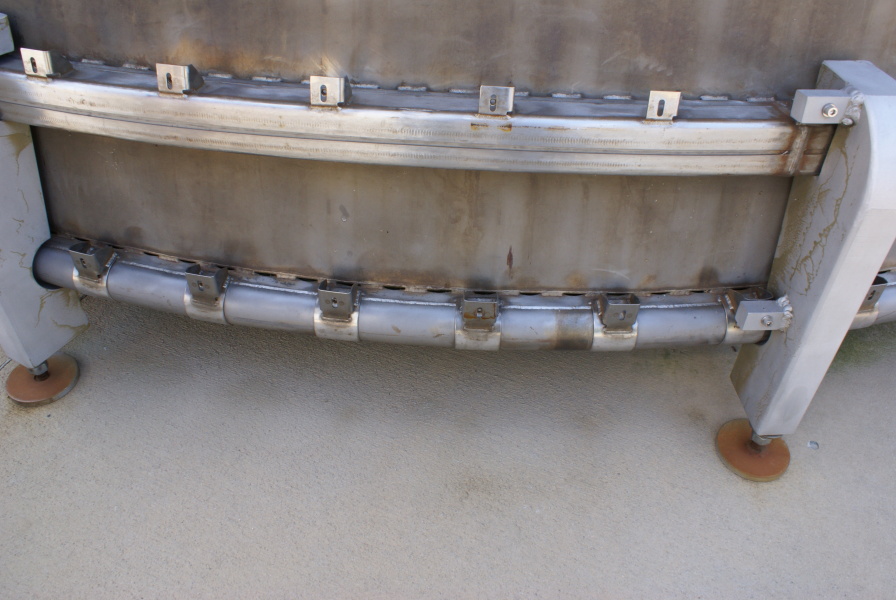| Prev |
heroicrelics.org Marshall Space Flight Center Site Index F-1 Engine (Building 4200) Gallery |
Next |
dsc96352.jpg
View of the nozzle extension exit plane.
The engine rested on a throat support (a pedestal on which the injector rests which supports the weight of the engine), as an F-1 engine may be too heavy for certain models of the nozzle extension to support, so this engine's nozzle extension did not quite reach the ground. The base of this engine's throat support was visible if one was willing to peek under the engine, and the column of F-4023's throat support is visible if one is willing to peep through a nozzle extension pyrotechnic igniter boss.
The "outriggers" visible here where presumably to prevent any wobble (or just to make the MSFC engineers feel better, so they don't see the engine levitating over the concrete). Note that the outriggers have been screwed into the nozzle extension's thermal insulation nutplates.
What caught my eye in this shot was the round, rather than rectangular, hatband at the exit plane. Upon returning home, I inspected my other photos of F-1 rocket engines, searching for other engines which have this round aft hatband. Only a few engines (the F-1 engine which was at Stennis Space Center when I visited it; engines 101, 105, and 103 [the center, lower left, and upper right engines] on S-IC-15 at the Michoud Assembly Facility, and all of the engines other than engine 104 [lower right] on the S-IC at Johnson Space Center).
By sheer coincidence, I was reading some F-1 documentation and noticed a nozzle extension diagram (on page 1-12 of the F-1 Rocket Engine Technical Manual: Engine Data) which noted both the rectangular and round aft hatbands, stating that the round hatbands were present on engines incorporating the MD140 change, which corresponds to ECP No. F1-441, which was implemented around 10 August 1967.
Doing a bit more research, I found that there was an F-1 Qualification Discrepancy Report on page J-49 of the Final Report, F-1 Engine Qualification Test Program (located in hardcopy form in the Thomson collection of the Archives & Special Collections of the University of Alabama in Huntsville) regarding the nozzle extension which noted
Problem Description
Posttest inspection revealed ... buckling of the -75 reinforcing band also occurred during four tests.Brief Description of Analysis, and Conclusions
The -75 band is subjected to loading in excess of the yield strength during the start and stop transient and usually buckles after two or three starts on all nozzle extensions.ECP 441 has been submitted to replace the -75 band with a non-yielding tubular cross-section Inconel band.
In a previous test, it was noted that the -75 band incurred a buckle, the width of the band, 3 inches long and 0.30 inch deep.
While I never found a diagram noting the position of the -75 hatband (or the -87 hatband, which also buckled during tests but for which no engineering change proposal was apparently generated), I have concluded that the -75 hatband must be the one by the nozzle extension's exit plane.
So, my initial note of a "round" hatband was slightly incorrect – it's actually a "non-yielding tubular cross-section Inconel" hatband. But at least I was close!

| Time picture taken | Thu Sep 12 15:49:32 2013 |
| Location picture taken |
Building 4200 Marshall Space Flight Center Huntsville, AL |
| Prev |
heroicrelics.org Marshall Space Flight Center Site Index F-1 Engine (Building 4200) Gallery |
Next |